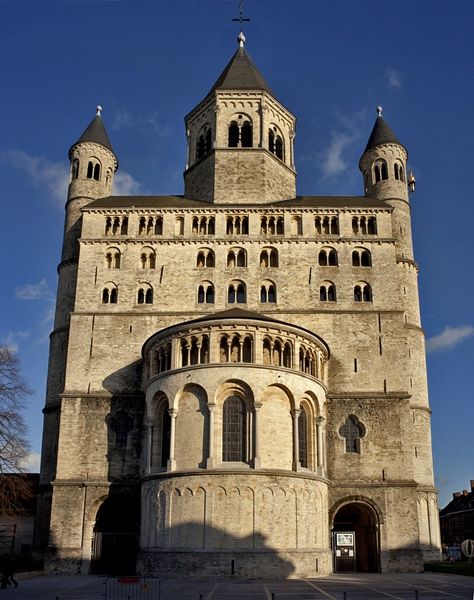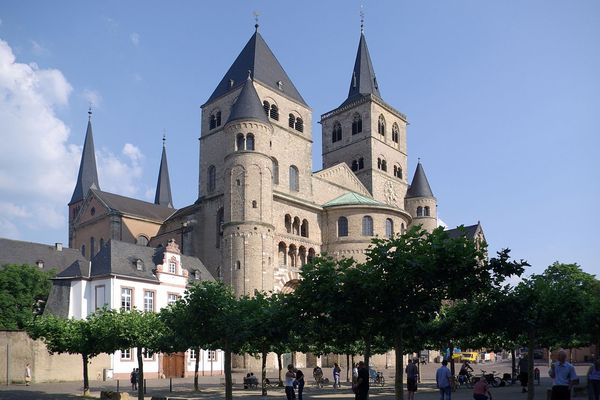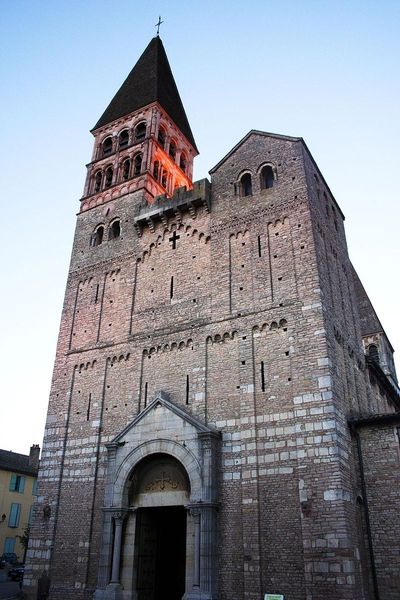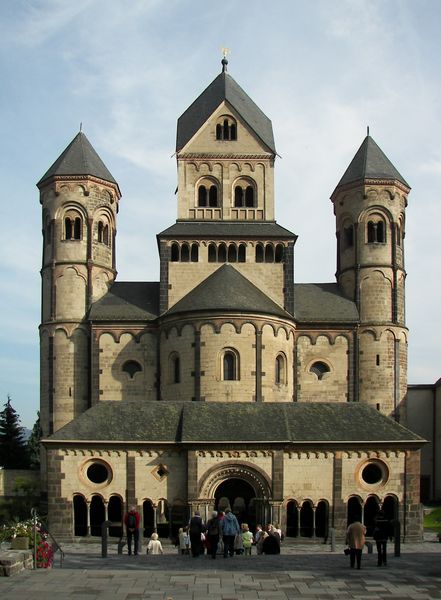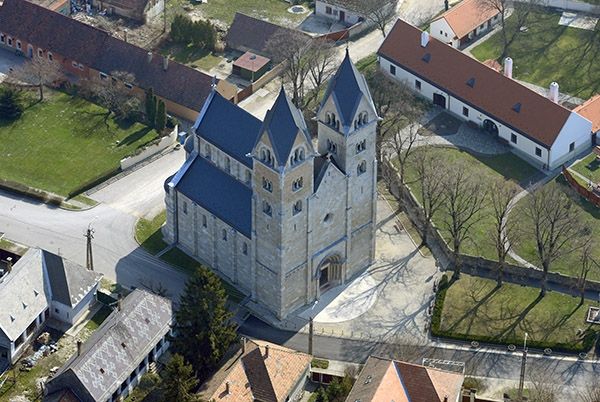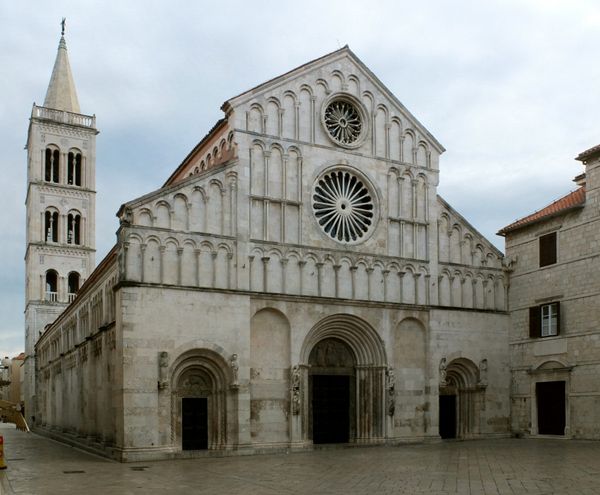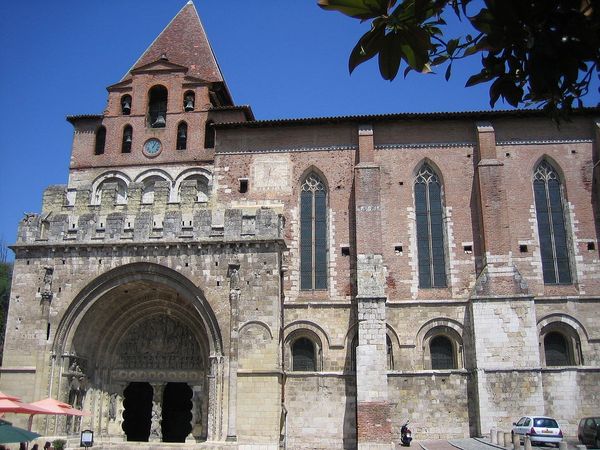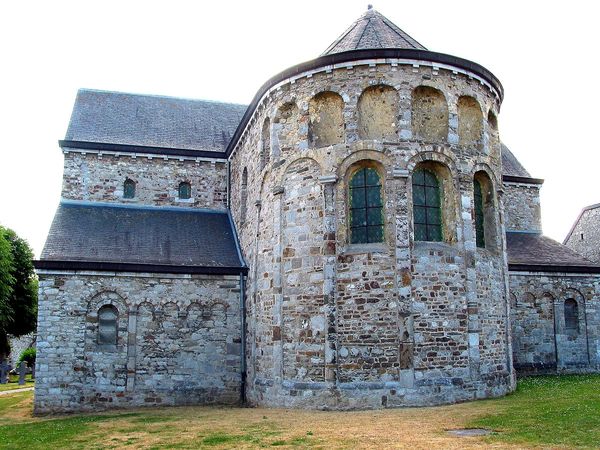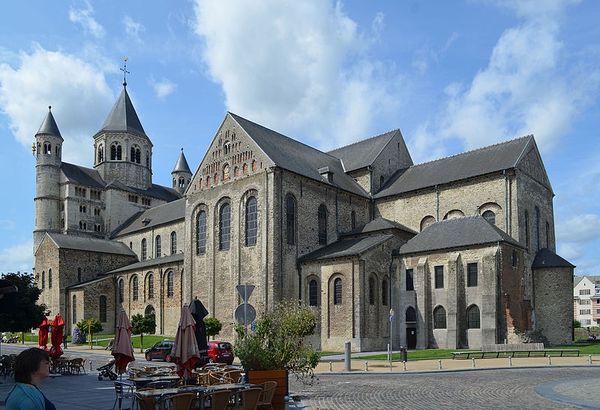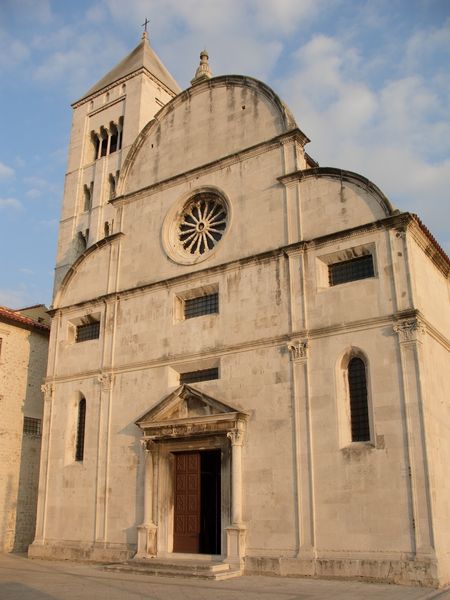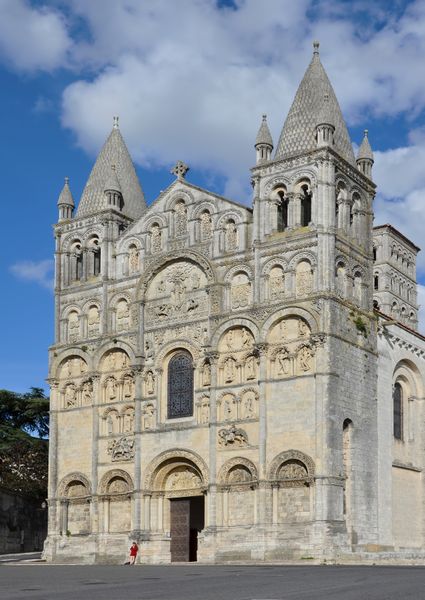
architecture
#
cityscape photography
#
cityscape
#
romanesque
#
cityscape
#
architecture
Copyright: Public domain
Editor: Here we have an image of the Trier Cathedral in Germany, constructed around 1200 during the Romanesque period. The sheer scale of it is immediately impressive. What formal qualities stand out to you? Curator: The use of stone as the primary medium dictates much of the aesthetic. Note the building's mass, amplified by the cubic forms and rounded arches. This contrasts with later Gothic architecture. Consider how the limited fenestration impacts the interior's light, cultivating a spiritual mood. The surface's varied textures and subtle shifts in color contribute to visual richness. Editor: It’s interesting how you focus on the materials. Do you think the later additions, like the clock tower, disrupt the Romanesque aesthetic? Curator: Observe how the addition creates a dialogue between periods, yet maintains a connection through the shared material. Note, also, the tension between the tower's angularity and the rounded forms of the original structure. What does that contrast evoke in you? Editor: It brings a certain dynamic, a push and pull, adding depth to its visual narrative. I hadn't considered it that way. Curator: Exactly. Analyzing these intrinsic formal relationships grants insight beyond the historical narrative. Close observation yields profound discoveries. Editor: Thank you; seeing it through the lens of its materiality helps understand its essence.
Comments
No comments
Be the first to comment and join the conversation on the ultimate creative platform.
